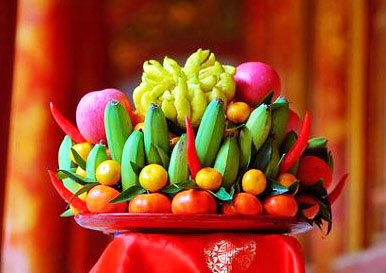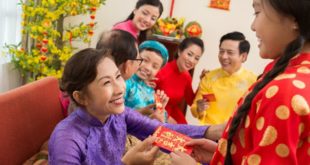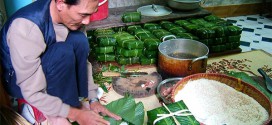A plate filled with five types of fruits sits on the ancestor’s altar in every Vietnamese home during the New Year. The fruits are colorful and meaningful. They make New Year more lively and sacred. In Asian mythology, the world is made of five basic elements: metal, wood, water, fire and earth. The plate of fruits on the family altar at New Year is one of several ways to represent this concept. The plate of fruits also represents the desire for good crops and prosperity.
The plate of fruits traditionally contains five to eight types: a bunch of bananas, a grapefruit, “Buddha’s-hand” fruit, a lemon, oranges, tangerines, apples, or persimmons. Families choose only the best looking fruit, which are arranged in a pyramid.

This practice has changed with modern lifestyles. Other fruits such as sapodilla, watermelons, coconuts, and custard apples may be added to the plate. Some families even use flowers and small colored electric lights to decorate the plate.
The plate of fruits in northern Vietnam is usually smaller than in the south. The three required fruits in the north are bananas, grapefruit and tangerines or oranges. The plate in southern Vietnam must have watermelons, custard apples, coconut, papaya and mangoes. The names of these fruits in Vietnam echo words signifying prayers for wealth.
The plate of fruits gives the family altar a cozy and colorful look. It helps to stress the importance of family traditions and family life.
 Vietnamese Culture and Tradition
Vietnamese Culture and Tradition 


